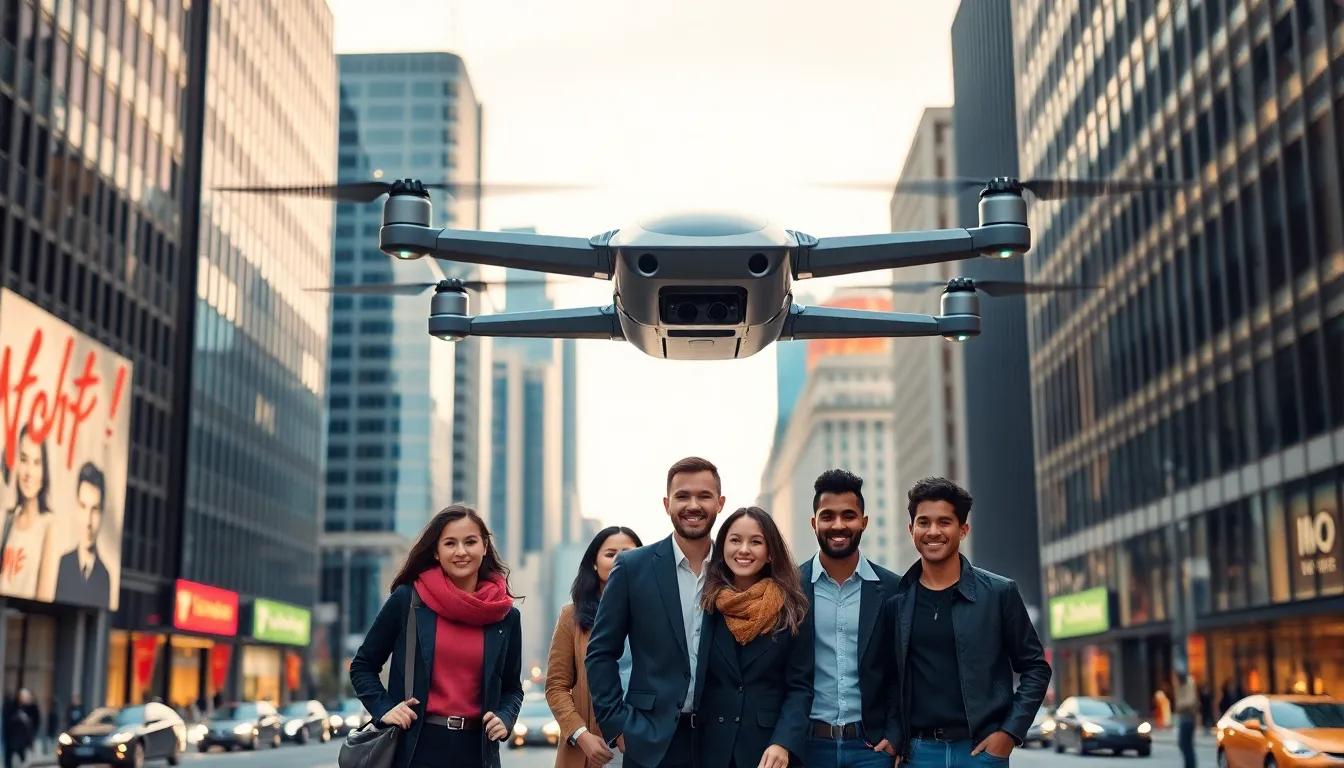Imagine soaring above rush hour traffic in a sleek drone, sipping a latte as you glide over the cityscape. Sounds like something out of a sci-fi movie, right? Well, buckle up, because passenger drones are not just a futuristic fantasy, they’re rapidly becoming a reality. These flying machines promise to transform urban travel, offering a solution to congested roadways and lengthy commutes. But what exactly are passenger drones, and how will they redefine our journeys? Let’s jump into this thrilling topic that’s going to change the way we get around.
Table of Contents
ToggleWhat Are Passenger Drones?

Passenger drones, also known as air taxis or flying taxis, are aerial vehicles designed to transport people and cargo vertically. Picture combining the features of a helicopter, a taxi, and a drone, the end result is a compact, efficient flying machine. Some prominent names in the industry, like Uber and Boeing, are developing commercial passenger drones that can take off and land vertically (VTOL), allowing them to navigate urban environments with ease.
These drones can carry a small number of passengers, typically around two to four. They leverage innovative technologies, including electric propulsion and autonomous navigation systems, to enhance safety and efficiency in urban air mobility. It’s a concept that promises not just speed, but also a new way to think about the cities we live in.
How Passenger Drones Work
So, how do these futuristic machines actually operate? Passenger drones use a combination of advanced technology, aerodynamics, and smart engineering.
At the heart of many passenger drones is an electric propulsion system, which not only reduces noise pollution compared to traditional aircraft but also promotes sustainability. Most models are designed with multiple rotors to provide stability during flight and maneuverability in tight spaces.
Also, they often come equipped with autopilot features. These features, powered by sophisticated algorithms and real-time data analytics, allow drones to navigate safely, avoid obstacles, and communicate with air traffic control. The goal here is to make flying as seamless and safe as hailing a taxi.
Benefits of Passenger Drones
The advantages of passenger drones are extensive, especially for urban transportation. Here are a few standout benefits:
- Reduced Traffic Congestion: By taking to the skies, passenger drones could decrease the number of vehicles on the road, leading to less congestion and shorter travel times.
- Environmental Impact: Most models are designed to be electric, which means they produce zero emissions during flight, aligning with global sustainability goals.
- Accessibility: As these drones become more mainstream, they could make it easier for people in hard-to-reach areas to access transportation, facilitating greater mobility.
- Efficiency: While traditional modes of transport are often constrained by roads and traffic lights, drones can fly direct routes, significantly cutting down on travel time.
In essence, passenger drones could redefine urban mobility, making it faster, cleaner, and more efficient.
Challenges Facing Passenger Drones
Even though the thrilling possibilities, there are significant challenges to overcome before passenger drones become a regular sight in our skies.
- Regulation and Safety: Airspace regulation is complex, and integrating drones into existing air traffic systems will require thoughtful legislation and safety protocols.
- Public Acceptance: The public must be convinced of the safety and reliability of passenger drones, given that flying can invoke anxiety for many individuals.
- Technology Hurdles: While advancements are promising, issues such as battery longevity, payload capacity, and real-time navigation systems still need to be addressed for broad-scale operations.
- Infrastructure: Designing landing pads, ports, and charging stations that accommodate drones poses another logistical challenge in urban landscapes.
Each of these hurdles must be tackled thoughtfully to ensure the successful integration of passenger drones into our transportation networks.
Current Developments and Innovations
The landscape of passenger drones is rapidly evolving, with multiple companies and startups making strides in this space.
For instance, Volocopter, a pioneer in the industry, has conducted successful test flights and is currently working towards operating air taxi services in metropolitan areas. Similarly, Joby Aviation has made headlines with its innovative designs and partnerships with established companies in the aviation sector.
These developments are not just theoretical: they are geared towards launching operational passenger drone services in the near future. Besides, public trials in cities like Singapore and Dubai are paving the way for regulatory approval, demonstrating how close we are to seeing these drones in action.
Regulatory Considerations for Passenger Drones
With innovation comes the need for regulation. Governments and aviation authorities are tasked with establishing frameworks that ensure safety while promoting technological advancements.
For instance, the Federal Aviation Administration (FAA) in the United States is developing guidelines specifically for urban air mobility (UAM). These guidelines will outline air traffic management, flight paths, and necessary certifications for drone operators.
Also, countries like the United Kingdom are also formulating policies to pave the way for passenger drones. Collaborative efforts between tech companies and regulatory bodies are essential to create a comprehensive safety net that protects both passengers and the public.
The Future of Passenger Drones in Urban Mobility
The future looks bright for passenger drones, with discussions ongoing about integrating them into everyday life. Envision a world where congestion is eased by personal flying vehicles, allowing people to traverse cities effortlessly.
As the technology matures, we can anticipate innovative solutions to accommodate air taxi services, significantly affecting urban planning and infrastructure development. The buzz around this technology suggests a potential paradigm shift in how we understand mobility, moving from land-based transport to embracing the skies.
While it may still be a few years off, the conversation surrounding passenger drones continues to gain momentum, painting a fascinating picture of urban transportation.


